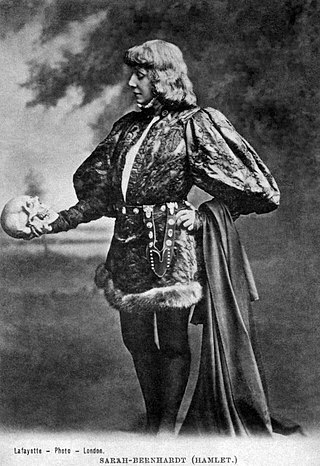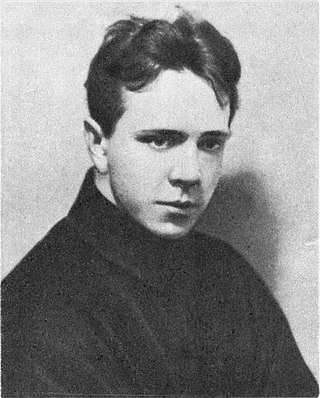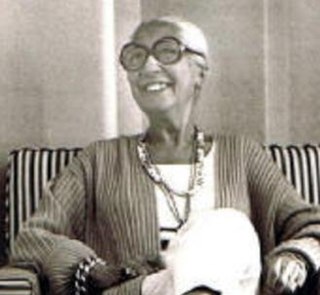Related Research Articles

Acting is an activity in which a story is told by means of its enactment by an actor who adopts a character—in theatre, television, film, radio, or any other medium that makes use of the mimetic mode.

Konstantin Sergeyevich Stanislavski was a seminal Soviet Russian theatre practitioner. He was widely recognized as an outstanding character actor, and the many productions that he directed garnered him a reputation as one of the leading theatre directors of his generation. His principal fame and influence, however, rests on his "system" of actor training, preparation, and rehearsal technique.

Method acting, known as the Method, is a range of rehearsal techniques, as formulated by a number of different theatre practitioners, that seeks to encourage sincere and expressive performances through identifying with, understanding, and experiencing a character's inner motivation and emotions. These techniques are built on Stanislavski's system, developed by the Russian actor and director Konstantin Stanislavski and captured in his books An Actor Prepares, Building a Character, and Creating a Role.

Stanislavski's system is a systematic approach to training actors that the Russian theatre practitioner Konstantin Stanislavski developed in the first half of the twentieth century. His system cultivates what he calls the "art of experiencing". It mobilises the actor's conscious thought and will in order to activate other, less-controllable psychological processes—such as emotional experience and subconscious behaviour—sympathetically and indirectly. In rehearsal, the actor searches for inner motives to justify action and the definition of what the character seeks to achieve at any given moment.

Lee Strasberg was an American theatre director, actor and acting teacher. He co-founded, with theatre directors Harold Clurman and Cheryl Crawford, the Group Theatre in 1931, which was hailed as "America's first true theatrical collective". In 1951, he became director of the nonprofit Actors Studio in New York City, considered "the nation's most prestigious acting school," and, in 1966, was involved in the creation of Actors Studio West in Los Angeles.

Sanford "Sandy" Meisner was an American actor and acting teacher who developed an approach to acting instruction that is now known as the Meisner technique. While Meisner was exposed to method acting at the Group Theatre, his approach differed markedly in that he completely abandoned the use of affective memory, a distinct characteristic of method acting. Meisner maintained an emphasis on "the reality of doing", which was the foundation of his approach.

Stella Adler was an American actress and acting teacher.

In acting, units of action, otherwise known as bits or beats, are sections that a play's action can be divided into for the purposes of dramatic exploration in rehearsal.

Mikhail Aleksandrovich Chekhov, known as Michael Chekhov, was a Russian-American actor, director, author, and theatre practitioner. He was a nephew of the playwright Anton Chekhov and a student of Konstantin Stanislavski. Stanislavski referred to him as his most brilliant student.

Yevgeny Bagrationovich Vakhtangov was a Russian-Armenian actor and theatre director who founded the Vakhtangov Theatre. He was a friend and mentor of Michael Chekhov. He is known for his distinctive style of theatre, his most notable production being Princess Turandot in 1922.
A beatscript or beat-script is a scripting aid used for describing story ideas. It offers a level of detail not afforded by the standard feature-film screenplay format. This makes it especially useful for describing short film, animation and short sequence ideas.
The Meisner technique is an approach to acting developed by American theatre practitioner Sanford Meisner.
My Life in Art is the autobiography of the Russian actor and theatre director Konstantin Stanislavski. It was first commissioned while Stanislavski was in the United States on tour with the Moscow Art Theatre, and was first published in Boston, Massachusetts in English in 1924. It was later revised and published in a Russian-language edition in Moscow under the title Моя жизнь в искусстве. It is divided into 4 sections entitled: 1-Artistic Childhood, 2-Artistic Youth, 3-Artistic Adolescence and 4-Artistic Adulthood.

The "art of representation" is a critical term used by the seminal Russian theatre practitioner Konstantin Stanislavski to describe a method of acting. It comes from his acting manual An Actor Prepares (1936). Stanislavski defines his own approach to acting as "experiencing the role" and contrasts it with the "art of representation". It is on the basis of this formulation that the American Method acting teacher Uta Hagen defines her recommended Stanislavskian approach as 'presentational' acting, as opposed to 'representational' acting. This use, however, directly contradicts mainstream critical use of these terms. Despite the distinction, Stanislavskian theatre, in which actors 'experience' their roles, remains 'representational' in the broader critical sense.

The Moscow Art Theatre production of The Seagull in 1898, directed by Konstantin Stanislavski and Vladimir Nemirovich-Danchenko, was a crucial milestone for the fledgling theatre company that has been described as "one of the greatest events in the history of Russian theatre and one of the greatest new developments in the history of world drama." It was the first production in Moscow of Anton Chekhov's 1896 play The Seagull, though it had been performed with only moderate success in St. Petersburg two years earlier. Nemirovich, who was a friend of Chekhov's, overcame the writer's refusal to allow the play to appear in Moscow after its earlier lacklustre reception and convinced Stanislavski to direct the play for their innovative and newly founded Moscow Art Theatre (MAT). The production opened on 29 December [O.S. 17 December] 1898. The MAT's success was due to the fidelity of its delicate representation of everyday life, its intimate, ensemble playing, and the resonance of its mood of despondent uncertainty with the psychological disposition of the Russian intelligentsia of the time. To commemorate this historic production, which gave the MAT its sense of identity, the company to this day bears the seagull as its emblem.

Presentational acting and the related representational acting are opposing ways of sustaining the actor–audience relationship. With presentational acting, the actor acknowledges the audience. With representational acting, the audience is studiously ignored and treated as voyeurs.

Mikhail Nikolayevich Kedrov, was a Soviet stage director, actor and pedagogue who managed the Moscow Art Theatre between 1946 and 1955. He is considered one of Konstantin Stanislavski's most brilliant disciples.
Sam Kogan was a Ukrainian actor, director, and acting teacher. He is best known for developing and establishing an acting technique that he called "The Science of Acting." He founded The School of the Science of Acting, in London in 1991. He also wrote the book The Science of Acting, which was edited by his daughter, Helen Kogan.
Maria Osipovna (Iosifovna) Knebel was a Soviet and Russian actress, theatre practitioner and acting theorist. Having trained with Konstantin Stanislavski, Vladimir Nemirovich-Danchenko, and Michael Chekhov, her work integrated the approaches and emphases of all three, with a particular focus on Stanislavski's technique of "active analysis" in the rehearsal of plays. She worked as a character actor, a theatre director, and a teacher. Her students included the actor Oleg Yefremov, the playwright Viktor Rozov, and the directors Anatoly Vasiliev, Leonid Heifetz, Alexander Burdonsky, Beno Axionov, Joseph Raihelgauz, Sergei Artsibashev and Adolf Shapiro. In 1958, she was named a People's Artist of the RSFSR.

Sofia Ezarovna Shatsova Helfand, known as Sonia Moore, was a Russian Empire-born American actress, writer and acting teacher. She is known for simplifying Stanislavski's system of acting devised by Konstantin Stanislavski. Moore was a student of Yevgeny Vakhtangov, and later became an acting teacher.
References
- Carnicke, Sharon M. 1998. Stanislavsky in Focus. Russian Theatre Archive Ser. London: Harwood Academic Publishers. ISBN 90-5755-070-9.
- Carnicke, Sharon M. 2000. "Stanislavsky's System: Pathways for the Actor". In Hodge (2000, 11–36).
- Hodge, Alison, ed. 2000. Twentieth-Century Actor Training. London and New York: Routledge. ISBN 0-415-19452-0.
- Stanislavski, Konstantin. 1938. An Actor's Work: A Student's Diary. Trans. and ed. Jean Benedetti. London and New York: Routledge, 2008. ISBN 0-415-42223-X.
- 1 2 3 4 From Stanislavsky's book 'An Actor Prepares, and A Dream of Passion: The Development of the Method of author, actor and acting teacher Lee Strasberg (Page 59 of the original version of the book).
- ↑ From A Dream of Passion: The Development of the Method of author, actor and acting teacher Lee Strasberg. Page 69 of the original version of the book.